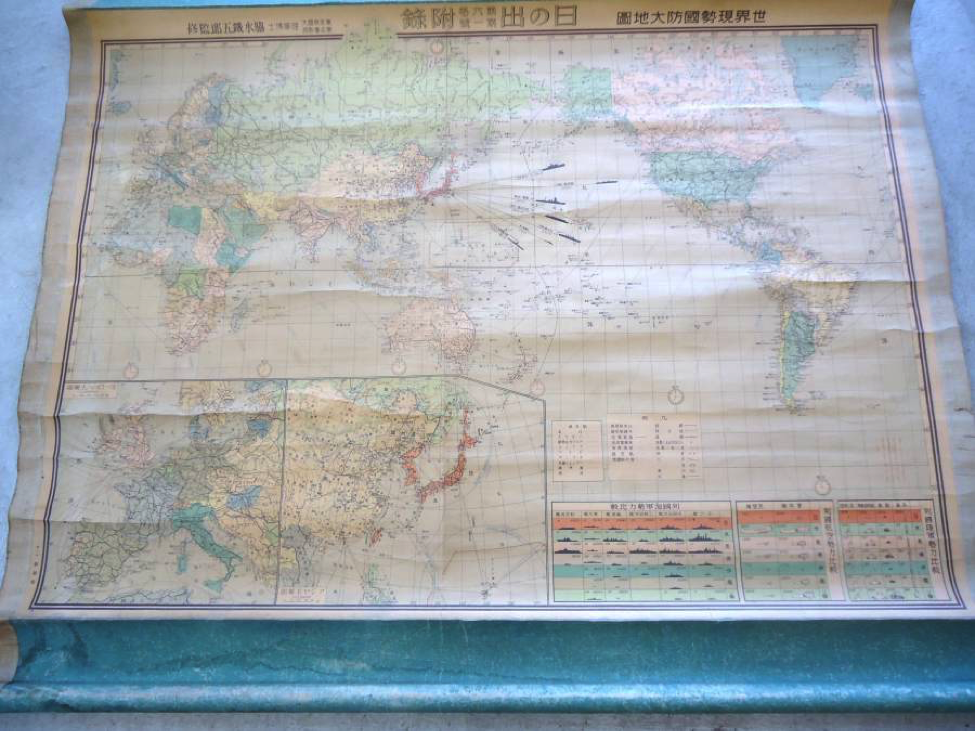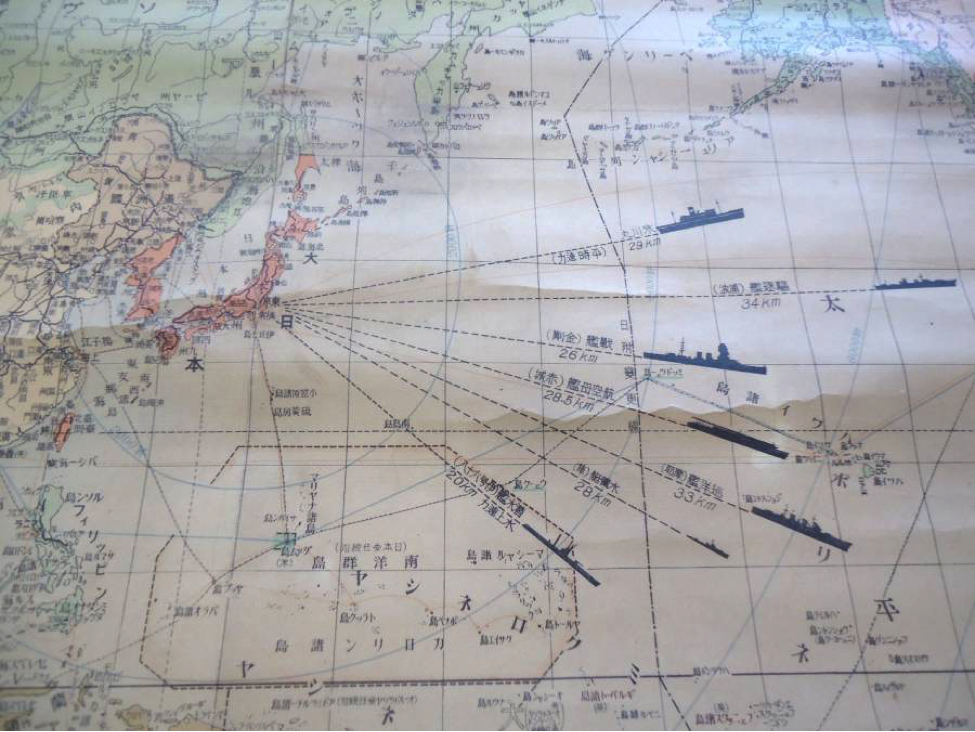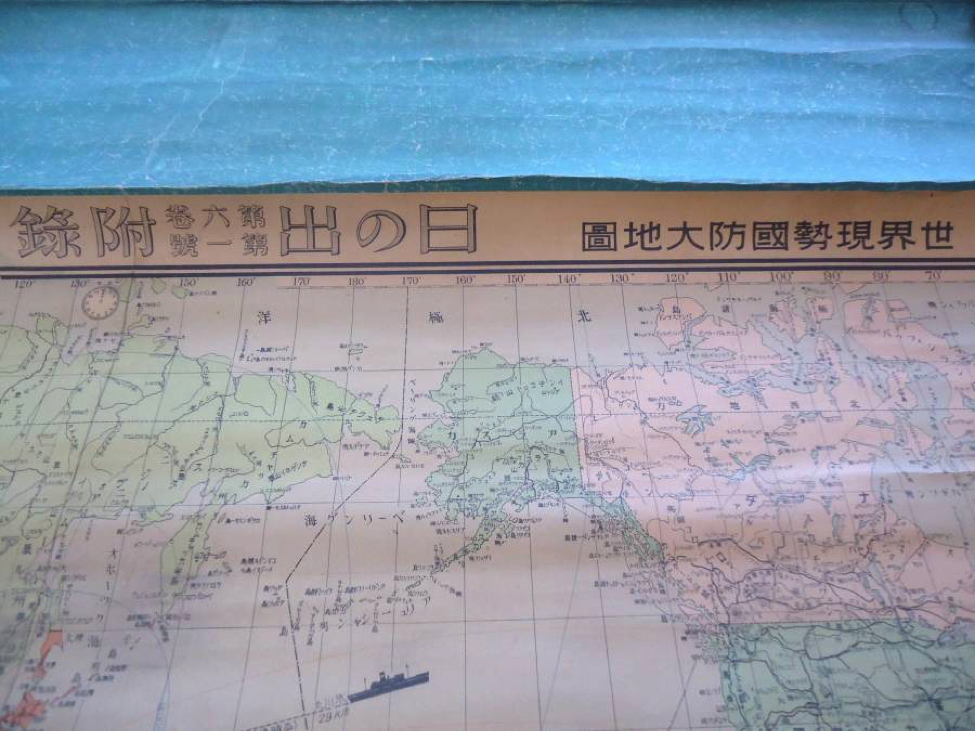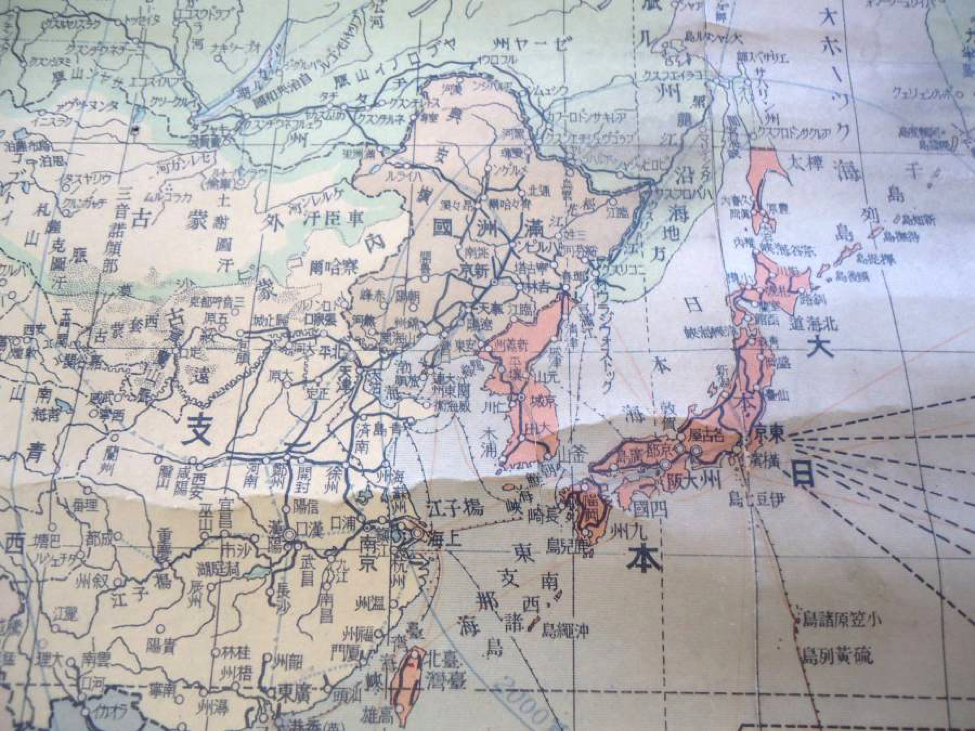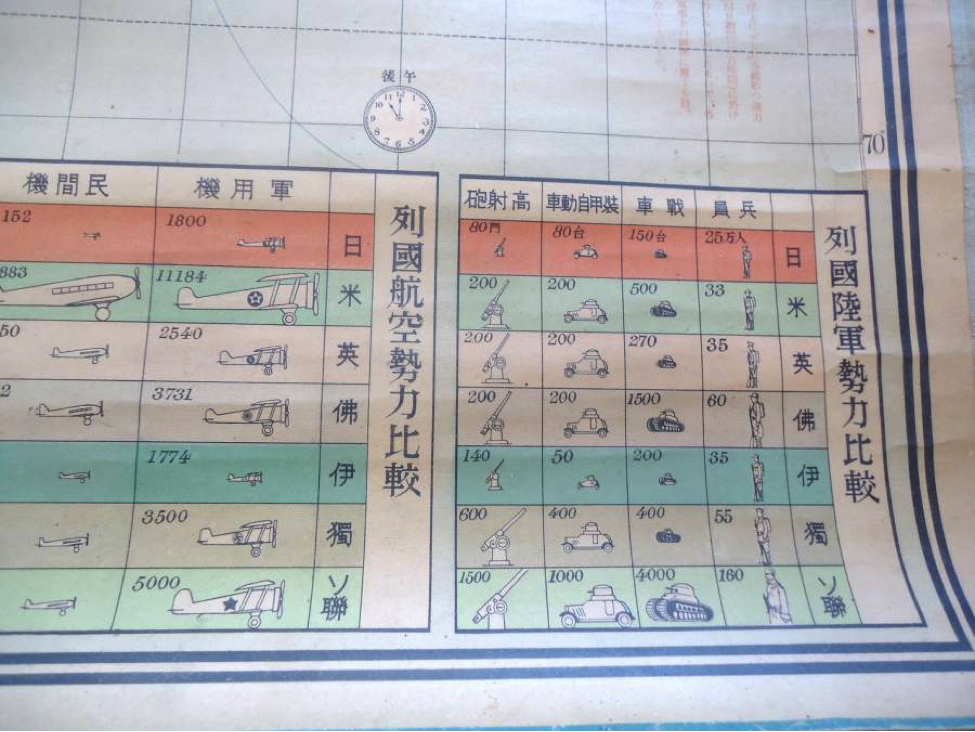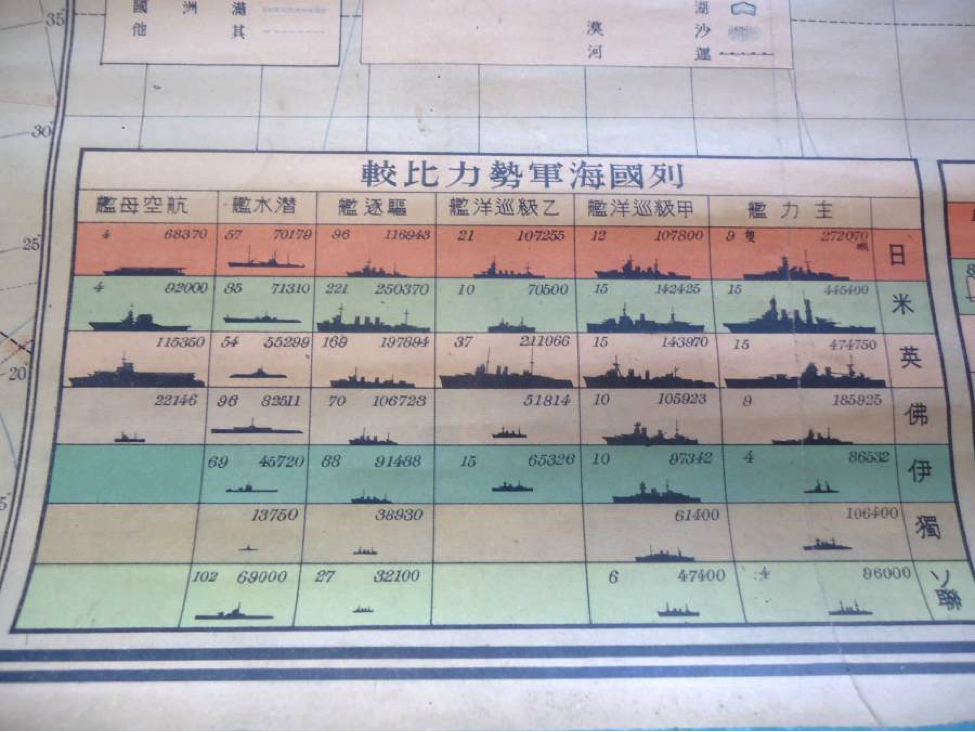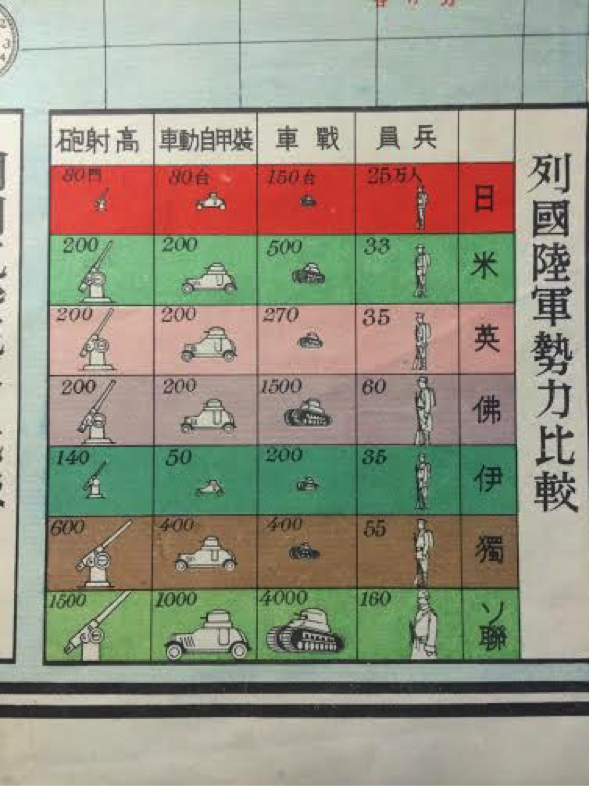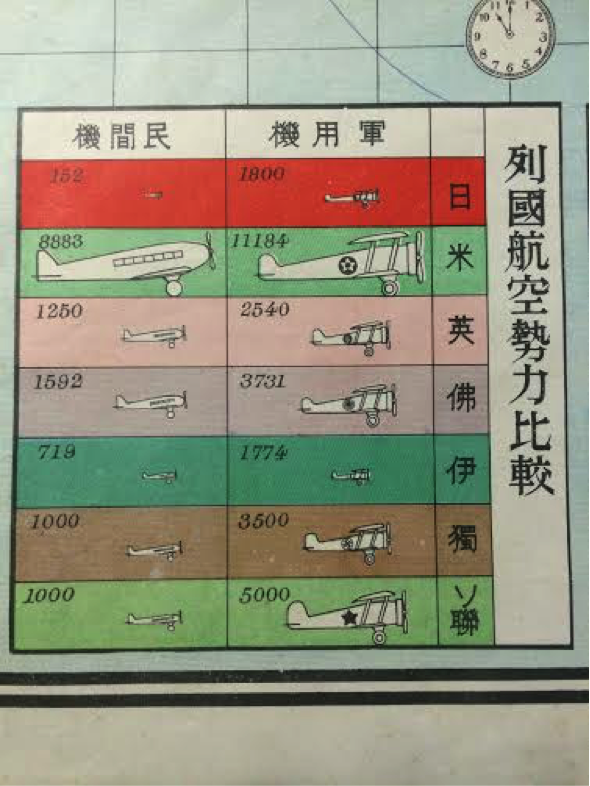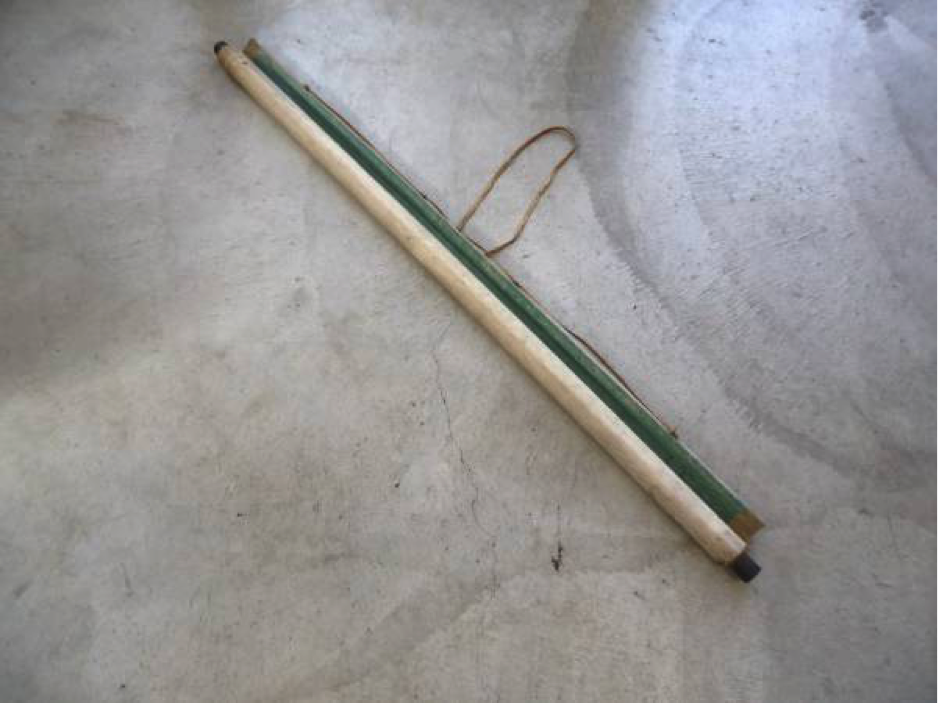1937 WORLD SITUATION & NATIONAL DEFENSE MAP ON A SCROLL
ORIGINAL
No reproductions available.
Issued on January 1, 1937 showing the power projection of the Imperial Japanese Navy including Carrier Akagi near Hawaii.
During the 1930s, the Japanese Navy began construction of airfields, fortifications, ports, and other military projects in the islands controlled under the South Pacific mandate, viewing the islands as "unsinkable aircraft carriers" with a critical role to play in the defense of the Japanese home islands against potential American invasion.
These became important staging grounds for Japanese air and naval offensives in the Pacific War.
- Kwajalein was a major base supporting the attack on Pearl Harborand the Battle of Wake Island
- Palau supported the Battle of the Philippines
- Saipan supported the Battle of Guam
- Truk became the base for amphibious landings on Tarawa and Makin in the Gilberts, as well as Rabaul, in the Australian mandate Territory of New Guinea
- Majuro was used in air strikes against Howland Island
- Jaluit Atoll was the base from which the Japanese Navy seized Nauru and Ocean Island
In addition to the islands' naval importance, the Japanese Army utilized the islands to support air and land detachments. The "island-hopping" strategy employed by the United States military caused the Japanese Empire to lose control of its Pacific possessions between 1943 and 1945.By 1937, Japan had annexed territory north of Beijing and following the Marco Polo Bridge Incident, a full-scale invasion of China began.
Japan's intention to acquire resource-producing colonies in the Pacific and Southeast Asia would likely lead to confrontation with the United States, thus the U.S. became Japan's primary potential enemy.
